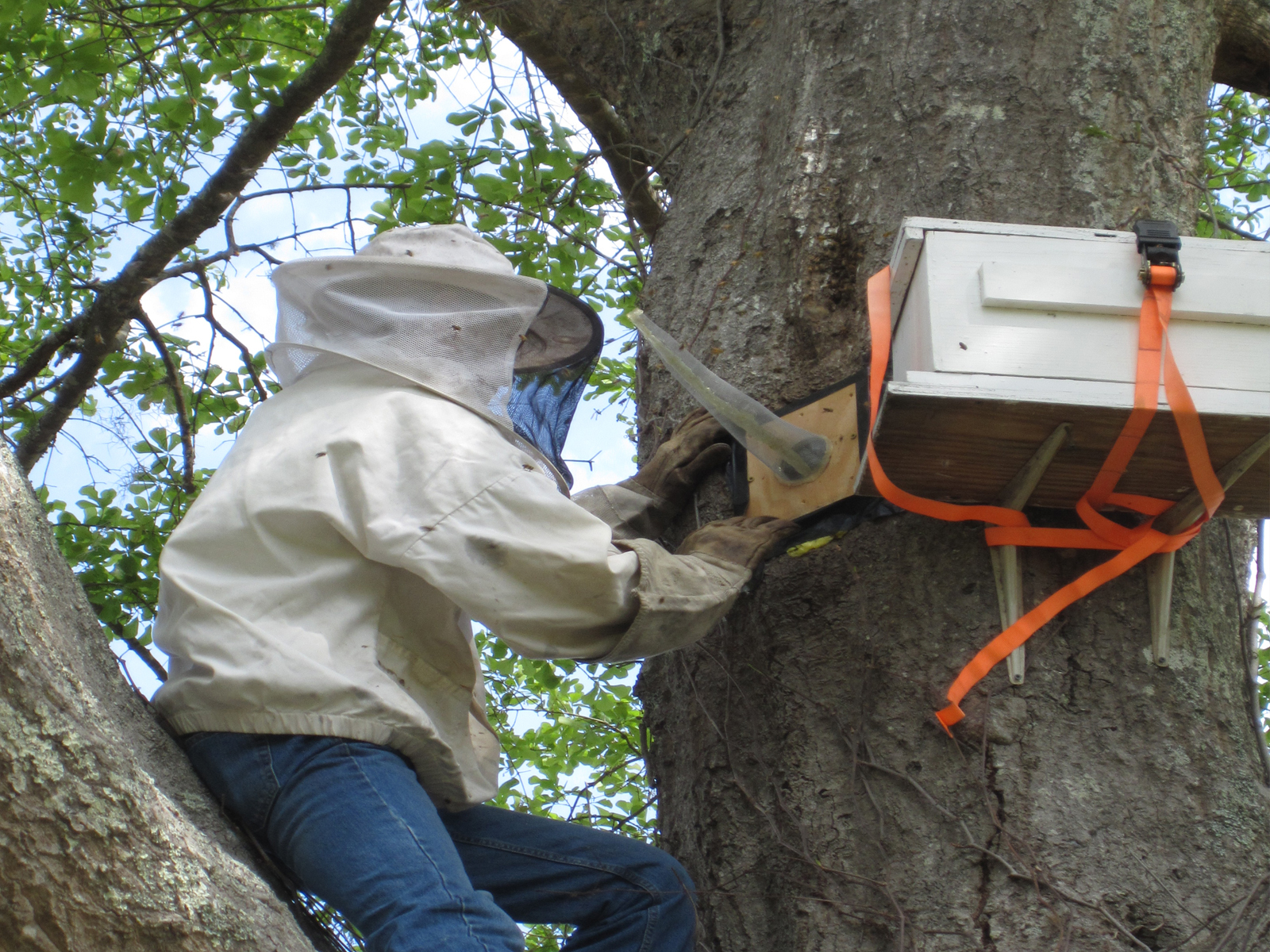Local Help with Your Bee Removal Needs
Welcome to our Bee Rescue page. We are providing options for live bee removal and relocation to a safe environment. Contact us today to obtain a local contact to safely remove honeybee swarms and beehives. Help save the Bees! Many local beekeepeers will provide this service for free or at minimal cost. Commercal bee removal experts charge for their time and travel. Still, removal costs are often less than the charges for a professional extermenator.
Be placed in contact with someone locally that can help with the safe live bee removal from walls, roofs, attics, chimneys, trees and bees nests, with provide with suggested solutions for recurring bee problems. Bee removal can be dangerous and sometimes difficult; a few bees buzzing around the exterior or inside the house is usually a sign of a beehive. An established beehive consists of many thousands of bees with honeycombs.
Sometimes an exterminator is used to exterminate the bees, but the honeycomb is left in the wall. This is never recommended in that it attracks other pests and if the opening is not sealed the bees will often return, perhaps years later. It is reccommended under most circumstances to completely remove and relocate the entire hive. If the bee colony has just appeared and is congregating outdoors, it is called a swarm. An average swarm maybe 5,000 - 20,000 bees and the size of a football or larger.
In case of a Swarm on a shrub or tree, best to leave it alone and call a beekeeper immediately. There are scout bees looking for a cavity with an opening the size of a dime. The scout bees (the bees hovering around the outside of the ball of bees) are signaling their next move. That move could be YOUR attic, your boat, your camper your dryer vent, or your garage. Once they are inside, it makes it more difficult to remove the bees and the effort and cost of removal increases.






